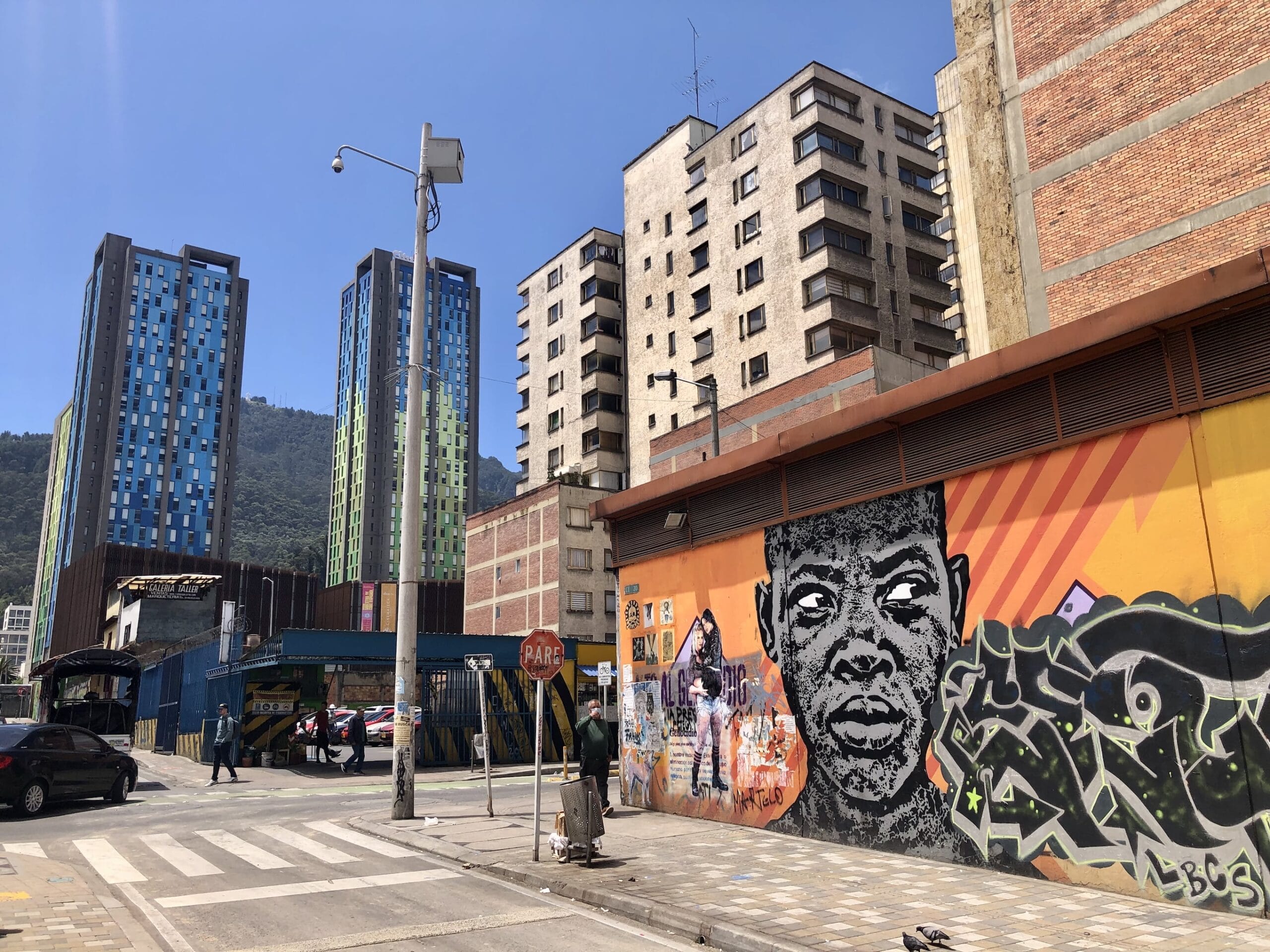Key Facts and Brief History of Bogotá
Before diving into the details, here are some interesting facts about Bogotá:
- Population: Approximately 12 million (exact numbers uncertain)
- Area: 1,600 km² (618 sq mi) including suburbs
- Elevation: Average 2,640 meters (8,660 ft)
- Climate: Subtropical highland
People have inhabited the area of present-day Bogotá for more than 12,000 years. Before the Spanish conquest, the Muisca people called this region home. Unfortunately for them, the area was crossed by the Magdalena River (now mostly covered within the city), which the Spanish believed provided a direct route to the legendary El Dorado. This prompted them to launch an expedition in the mid-1500s. Although nearly 80% of the original 800-person expedition perished before reaching present-day Bogotá, this didn’t deter them from establishing a military outpost on this strategically important Andean plateau.
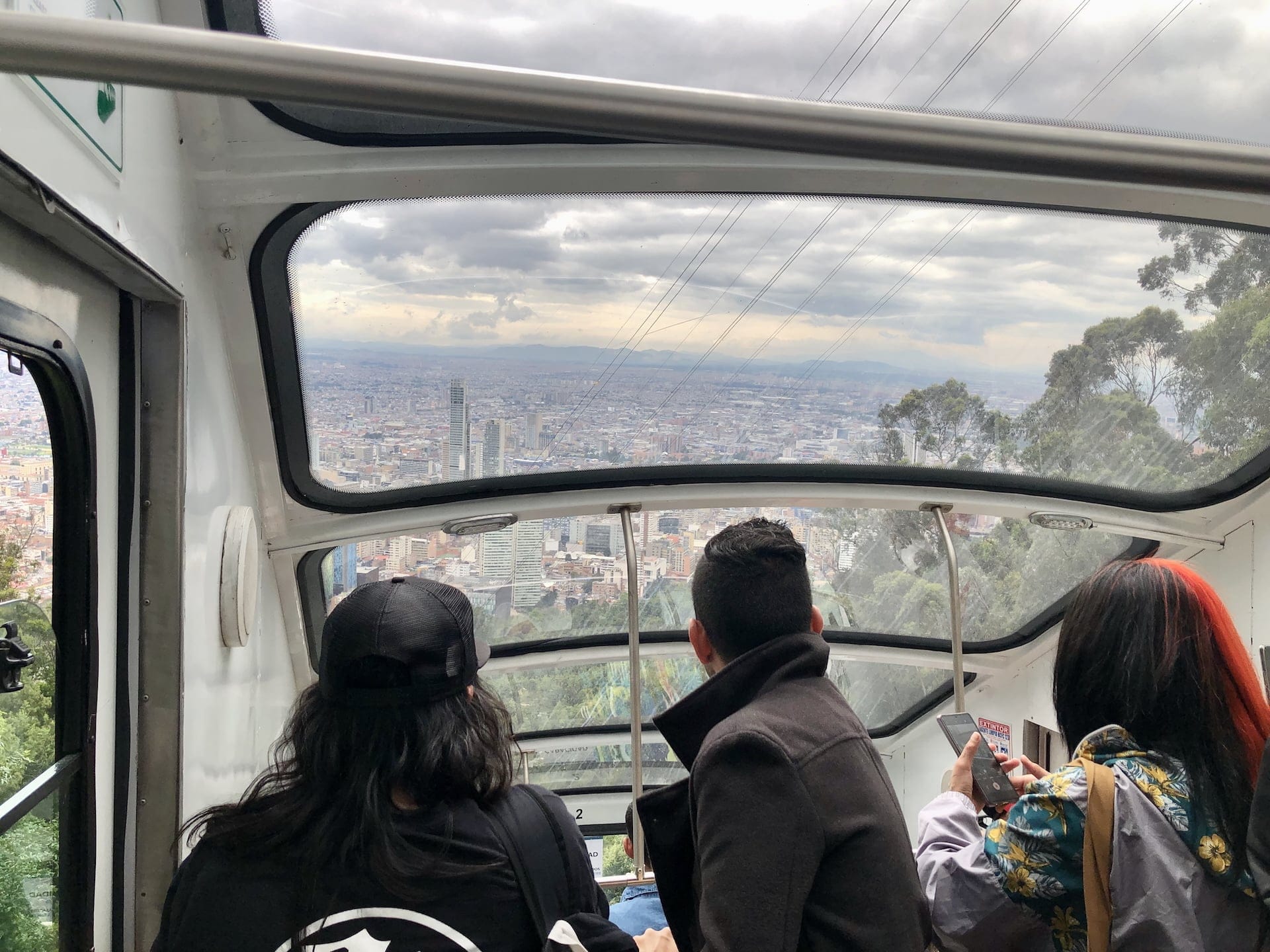
As happened elsewhere in South America, diseases brought by the colonizers decimated the indigenous Muisca population, with estimates suggesting 65-85% mortality rates. The survivors faced further hardships under colonization. The modern city was founded in 1550 as Santa Fe (later Santa Fe de Bogotá, which was also the official name from 1991 to 2000) and became the capital of the New Kingdom of Granada.
After Colombia’s war of independence, in 1819, Bogotá became the capital of Gran Colombia (a republic comprising modern-day Colombia, Ecuador, Panama, Venezuela, and parts of Peru and Brazil). The subsequent events in the city – and throughout Colombia – remained turbulent even into the 21st century. However, Bogotá provided relative safety for Colombians, leading to a massive population boom.
The high altitude of Bogotá (2,640 meters/8,660 ft) can affect visitors. Consider spending your first day taking it easy to acclimatize, and stay well hydrated.
Transportation
Getting from El Dorado International Airport to the City
Most international visitors arrive at El Dorado International Airport. Fortunately, it’s relatively close to downtown, and you have several transportation options.
The most straightforward option is taking a taxi. Imperial Taxi is the official airport service provider, and you can arrange your ride at designated stands inside the terminal.
Official airport taxis have a set rate system and can be arranged at designated stands inside the terminal. Avoid accepting rides from unofficial taxi drivers approaching you outside or inside the terminal. Prices are around 40,000 COP (~9 USD) to the center of the city as of 2024.
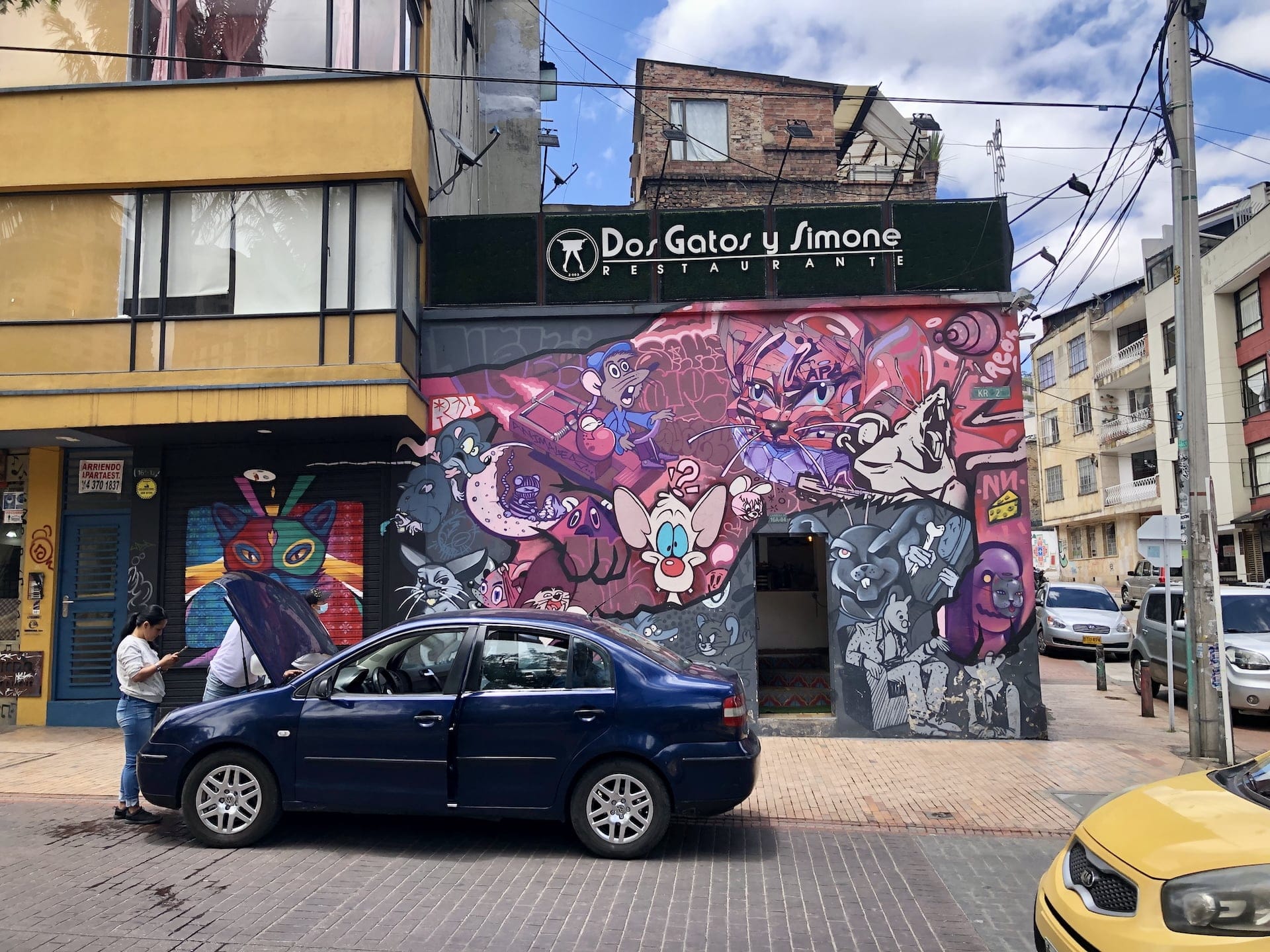
Public transportation is also available. You can take a bus to the Portal Eldorado TransMilenio station and continue your journey on the famous TransMi network – more on that below. While we’re generally big advocates for public transportation, we opted for a taxi in Bogotá for several reasons. First, navigating the TransMilenio system can be overwhelming, especially after a 15-hour flight. Second, the buses are often extremely crowded – particularly during rush hours – making them impractical with luggage. Access to the TransMilenio system is done through the rechargeable Tullave card, which can be purchased at the kiosk located on the 1st floor in front of door 8 in Terminal 1.
Getting Around by Taxi
During our stay, we primarily walked or used taxis. The easiest way is to use ride-hailing apps – locals prefer Cabify and Didi, and we used Cabify without any issues. While Uber is technically illegal in Colombia, it operates in a grey area and works in practice.
However, be prepared for one thing: the traffic can be absolutely horrendous. A 20-minute journey can easily stretch to 90 minutes, with seemingly endless periods of complete gridlock. We once spent over two hours traveling from La Candelaria to El Chicó at night – a trip that typically takes 30-40 minutes. The TransMilenio can be a good alternative to avoid traffic jams.
Public Transportation: The TransMilenio
Bogotá’s famous TransMilenio, or simply TransMi, is a Bus Rapid Transit (BRT) system. These massive articulated buses operate on dedicated lanes with metro-style stations. Some say the entire network resulted from Mercedes’ lobbying efforts and alleged under-the-table dealings to choose BRT over a metro system.
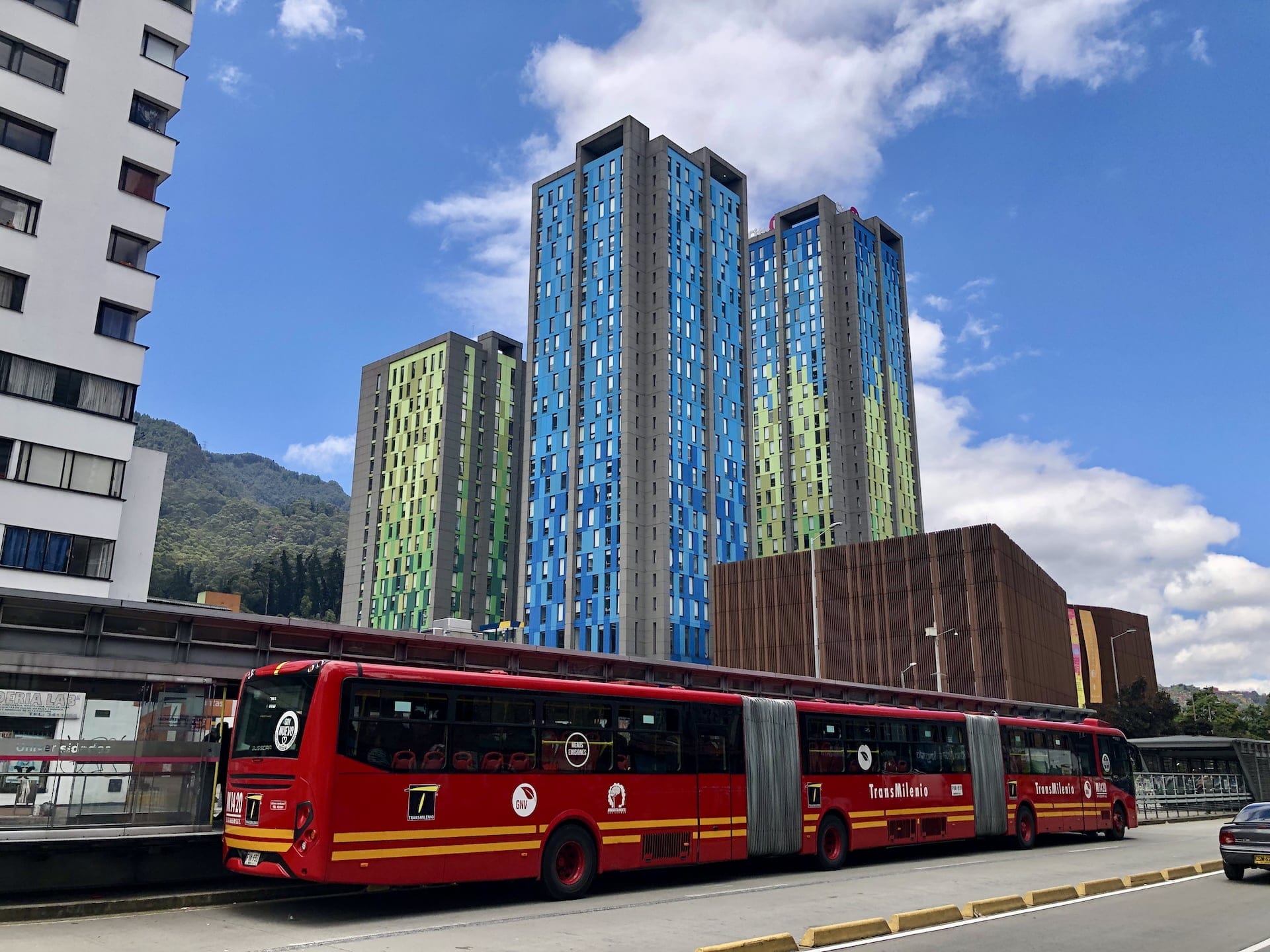
What’s certain is that they built an extensive network at a fraction of metro costs. The system currently operates with nearly 150 stations and well over 100 kilometers (62 miles) of routes. Local opinions vary: many consider it unreliable, complicated, and somewhat unsafe – but it’s undeniably successful, inspiring similar BRT systems worldwide.
While taxis are inexpensive, bus transit is even cheaper at around 2,600 COP (~0.65 USD) per ticket, valid for two hours with up to two transfers. The main articulated buses form the “trunks” (troncales) with 12 routes, supplemented by smaller feeder buses: green (alimentador), blue (urbano), red (especial), and orange (complementario). The entire network operates with the Tullave card, which you can reload digitally or at numerous physical locations.
Overall, it’s worth trying the public transport once or twice, especially the Carrera 7 line, but generally stick to taxis or walking.
Where to Stay in Bogotá
While Bogotá is enormous, tourists typically explore a relatively small area. We recommend considering these three main areas:
La Candelaria
You’ll likely spend considerable time here in the colonial heart of the city. While prices aren’t the lowest, major attractions are within walking distance. However, it can feel less inviting at night, and if you’re staying longer than a few days, its southern location means you’ll face those notorious traffic jams frequently.
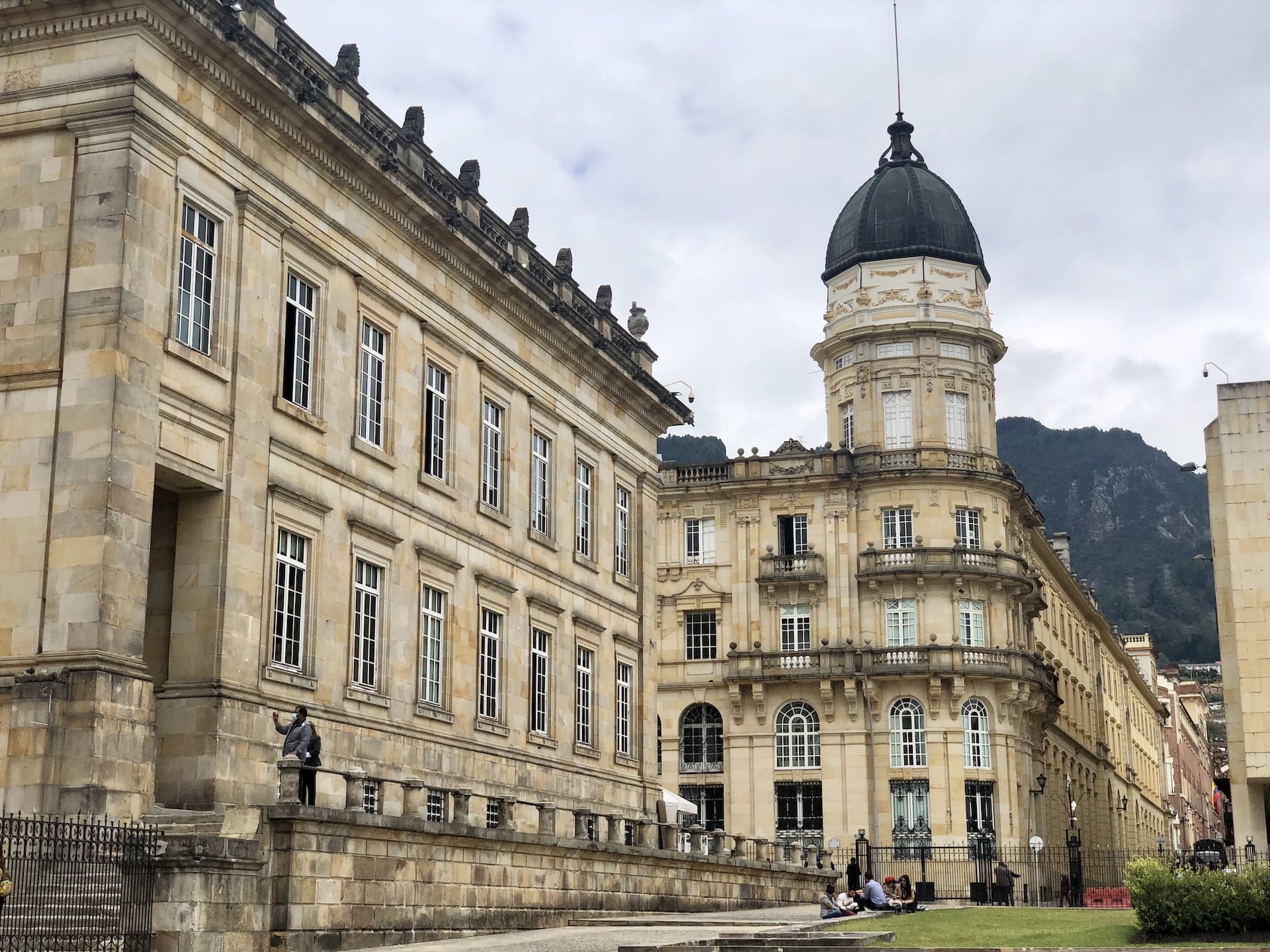
Zona Rosa/Zona T + Chapinero
Perfect for those who love vibrant nightlife and want to step right into the action from their accommodation. During the day, you can explore numerous shopping malls and stores.
We’ve grouped this with the slightly southern Chapinero district, another diverse area popular among locals. It’s fairly central to attractions, though short-stay visitors might mostly travel south from here.
This area hosts major (and pricier) hotel chains like Hilton, Marriott, and Four Seasons.
El Chicó / Parque 93
We chose this area and would likely stay here again. Located further north, it’s quieter and greener, but still offers trendy bars and restaurants around Parque 93. If you prefer a more residential feel, aren’t interested in partying, or feel apprehensive about your first visit to Bogotá or South America, this is an excellent choice. The main drawback is the considerable distance to La Candelaria, which can mean long journeys in traffic.
We stayed at the Soy Local Parque La 93 and were completely satisfied. There’s even a great craft beer bar right at the entrance!
When choosing accommodation, consider that morning and evening rush hours can make cross-city travel significantly longer. Choose a location close to the attractions you plan to visit most frequently.
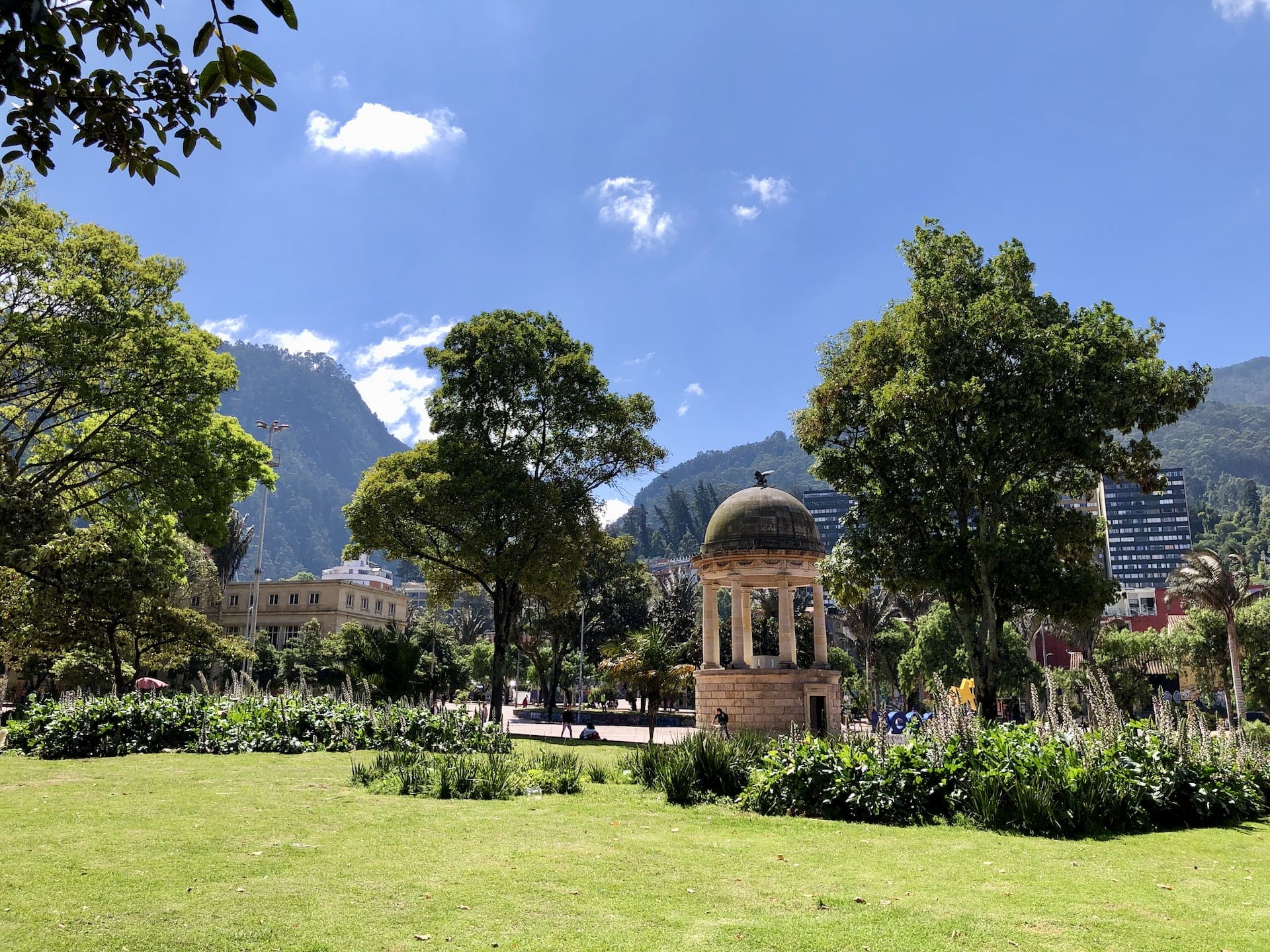
What to Eat in Bogotá
While our stay wasn’t long enough for a comprehensive restaurant guide, here are some must-try dishes, focusing on street food.
Ajiaco
Personally, my favorite Colombian dish is ajiaco, this hearty soup containing shredded chicken, corn, three types of potatoes, and local herbs, served with rice, capers, sour cream, and avocado. The most famous place for ajiaco santafereño is La Puerta Falsa. You absolutely must try it!
Empanadas
Colombian empanadas might surprise Europeans, but the concept remains similar: folded pastries with various fillings, typically beef, chicken, pork, or cheese. The main difference is the corn-based dough and deep-frying preparation. You’ll find empanadas everywhere in the city – perfect for a quick meal.
Arepas
Consider these the empanada’s cousin. These cornmeal patties serve as both sides and main dishes. Try the breakfast version with scrambled eggs.
Mazorca desgranada
Essentially corn kernels removed from the cob, and like arepas, they’ll add almost anything you can imagine to it. However, it can be a lighter option, potentially even a salad, making it perfect when you want something less heavy.
Bandeja paisa
Paisa refers to people from Colombia’s interior, particularly the Andean region, and this is their signature dish. One look tells you it’s not a light meal – it’s specifically designed for the cooler climate. The plate typically includes pork belly (chicharrón), sausage (chorizo), arepa, rice, egg, plantain, and various sauces. It’s substantial and perfect for the day after a night of enjoying local beers and aguardiente!
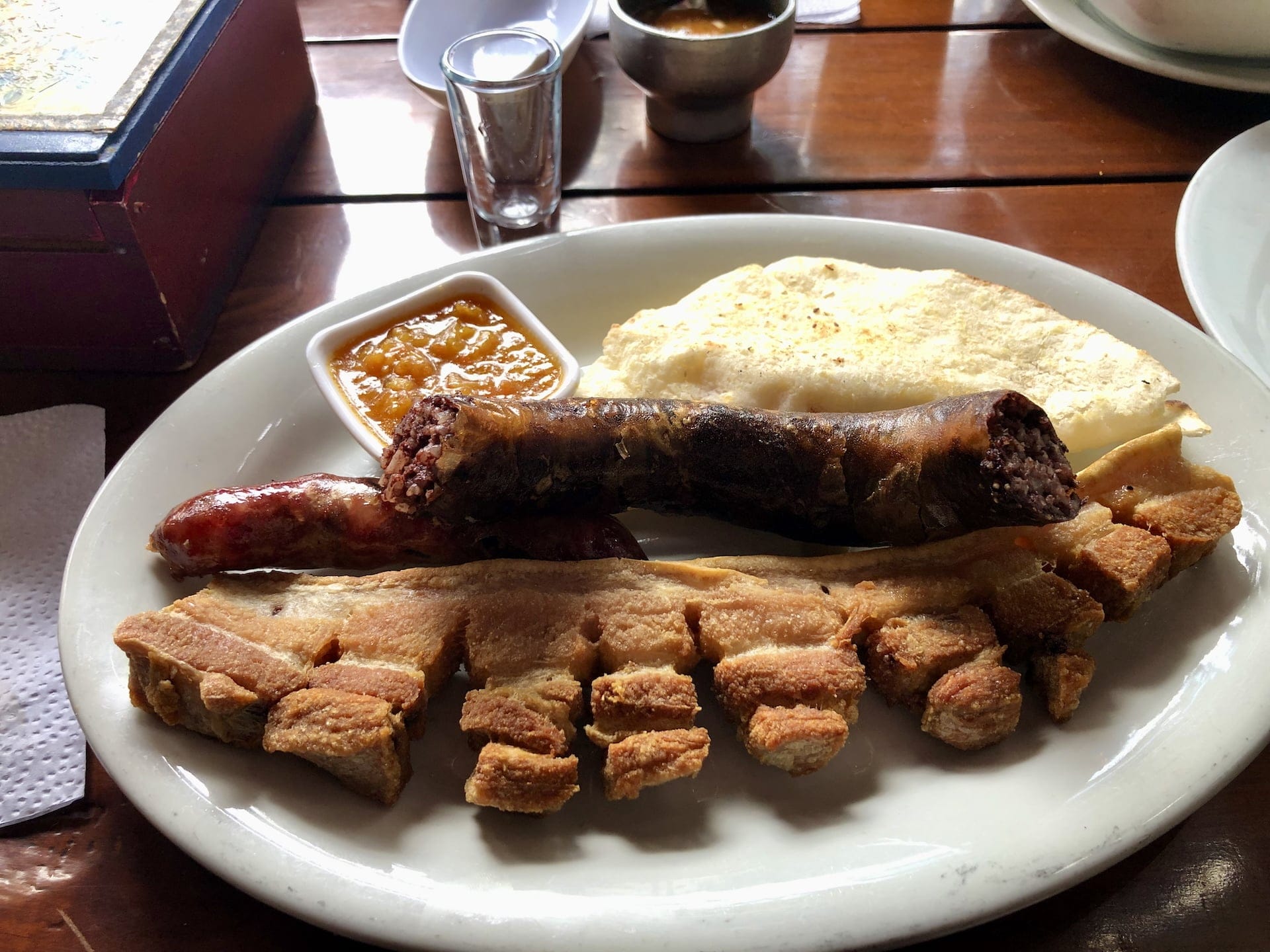
Weather
Many associate Colombia with sandy beaches, palm trees, and Caribbean vibes. While the country certainly has such areas (plenty of them!), don’t expect this in Bogotá. As mentioned in the introduction, the city sits at an average elevation of 2,640 meters (8,660 ft), so it’s significantly cooler than coastal Colombia. While you won’t need winter gear, pack a light jacket or sweater.
Speaking of jackets, bring rain gear. Even outside the rainy seasons (March-May and October-December), sudden showers are common, often with no warning. Given the city’s size, it might rain in one area while another enjoys sunshine.
Don’t underestimate the sun despite moderate temperatures. The high altitude and proximity to the equator can be deceptive. I got my first-ever scalp sunburn here, despite having hair and it being a cloudy day rather than bright sunshine. Overall, the weather is pleasant but highly variable. Most importantly, don’t expect tropical climate conditions.
The combination of high altitude and equatorial location means UV rays are particularly strong. Use high SPF sunscreen even on cloudy days.
Safety
When I first told friends and family about traveling to Colombia, the typical response was: “Are you crazy? You’ll get robbed/kidnapped/killed!” While the country still struggles with its reputation, and there certainly were times when visiting wasn’t advisable, those days are largely past.
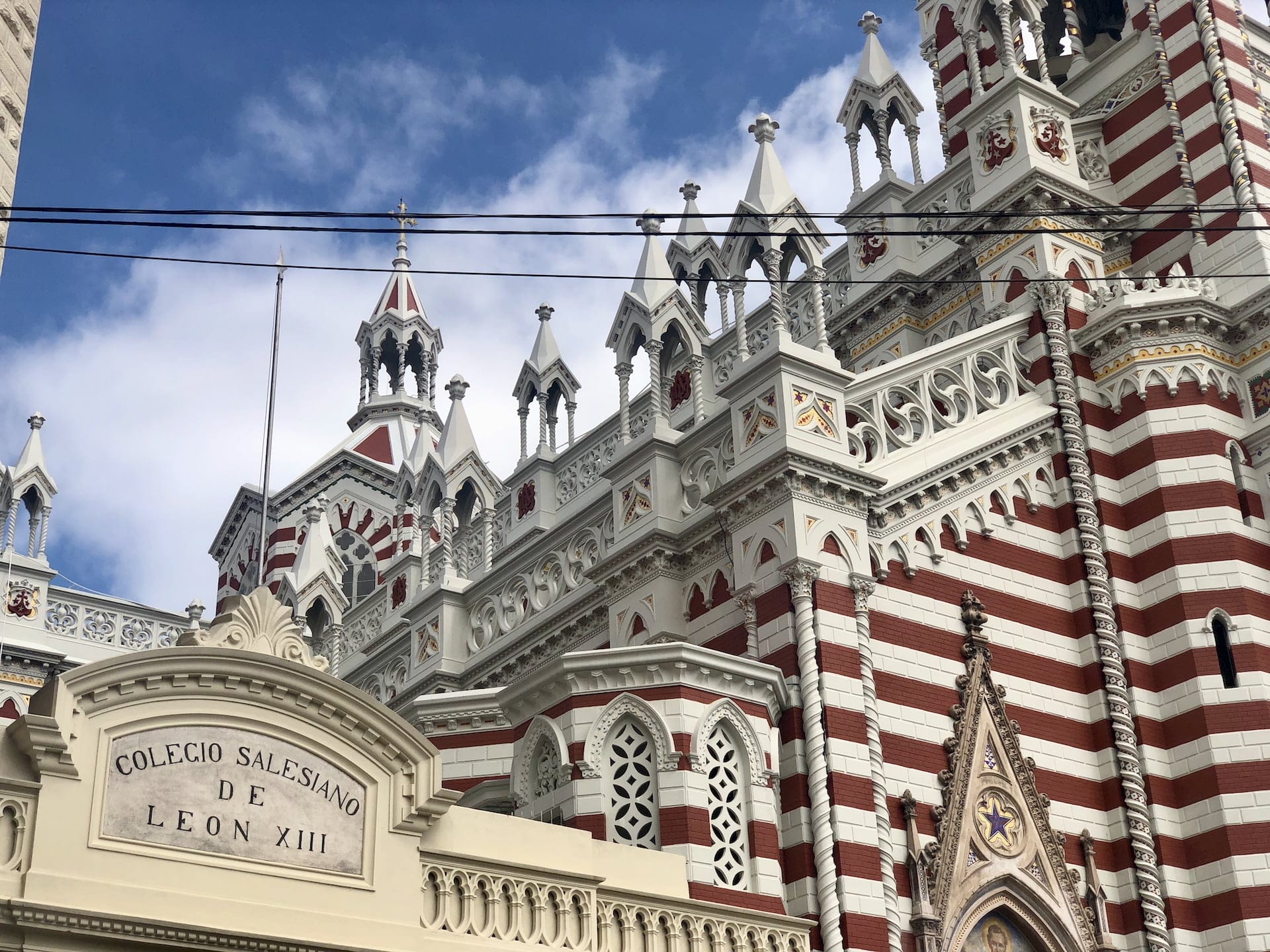
There’s a local saying: no dar papaya or “don’t show the papaya,” meaning don’t flaunt wealth (jewelry, cash, etc.) as it can attract trouble. This is especially true on public transport, at TransMilenio stations, and in sketchy-looking streets or alleys. It helps if you don’t scream “tourist” (though locals will immediately know you’re not local). For instance, Bogotanos don’t wear sandals, shorts, or zip-off hiking pants, so dressing appropriately shows you understand local customs.
Nevertheless, stay alert as you would anywhere. While theft and robbery occur, common sense and awareness usually prevent problems. We spent three weeks in Colombia without any issues. You’ll notice a more visible police presence than you might be used to, and we occasionally saw locals being stopped and searched on the street.
To summarize: Is Bogotá safe? Yes, with basic precautions, it’s as safe as any major world city.
Conclusion
Go ahead and visit Bogotá! With this knowledge, you won’t feel lost in the city, and while its size or different way of life might seem daunting at first (especially if it’s your first stop in Latin America), you’ll quickly adjust, trust us!
If you’re interested in what attractions we visited in Bogotá and our additional tips, click here to read our detailed report.
